One question I have is the description of your motorized/mechanized forces--should they not be called "Motor Rifle"?
The Battle of Pleven had the 202. Moto. Strelk division, which my limited Russian seems to indicate is a motor rifle division.
One question I have is the description of your motorized/mechanized forces--should they not be called "Motor Rifle"?
The Battle of Pleven had the 202. Moto. Strelk division, which my limited Russian seems to indicate is a motor rifle division.
It should be called - motostrelkovaya divizia. BTW - this is how it is called in HPP mod.One question I have is the description of your motorized/mechanized forces--should they not be called "Motor Rifle"?
BTW what is happening in other parts of the world? What are the Allies doing?
Tense situation in the Balkans. The MP losses are bad - dipping below 30? Not reinforcing even Guards and Tank formations? The Rodina is in poor shape. It is good that the Axis powers are in worse shape!
I know these are desperate measures, but have you thought about disbanding your obsolete navy? Or getting rid of some of the less useful parts of your forces? Or even changing your conscription laws (if you can)?
I doubt that disbanding the navy would provide much MP...
20 MP can make a big difference.
As for manpower, you're doing most of what Stavka did by cutting down on regular reinforcements for units that aren't engaged in critical assaults. Both Russian and German armies, as their losses mounted, started to reduce the size of their ordinary infantry divisions in different ways. Increased firepower and extra specialised attached units made up for it to some degree.
It's not good news for your forces in Romania, but in terms of sensible long-term planning on the German side, it's not exactly the best idea they've ever had to send so many reinforcements to what is in reality a secondary sector. The most plausible explanation would be that they over-estimated the damage done to your tank armies in the last Ukrainian offensive, and/or under-estimated your ability to replace the losses and reorganise quickly. Although Hitler was always willing to send units off on wild goose chases, and he was obsessed with oil, so I suppose it's not a surprise. But you say it yourself, ... That's disaster in the making.
I wonder how long the Ploiesti oil fields will be out of action for. Do you have an idea of the Axis fuel situation at present? If it's critical, then this attack to recapture the oil fields might actually be the most strategically sensible thing the AI could do, which would be impressive in itself. Of course, it's more likely to be caused by your relative weakness in the region, but still nice to see the computer doing things that a human would.
Have you thinked about landing to British isles ??
I stumbled across this AAR, and I must say, it's encouraged me to write my own (in the future). It's sucked me in and taken me about five days to go from page 1 to 48--so whoever said that it would be impossible to catch up from the beginning: HA!
One question I have is the description of your motorized/mechanized forces--should they not be called "Motor Rifle"?
The Battle of Pleven had the 202. Moto. Strelk division, which my limited Russian seems to indicate is a motor rifle division.
It should be called - motostrelkovaya divizia. BTW - this is how it is called in HPP mod.
Caught up again. I guess you were more than happy to trade those territorial losses in the Balkans for the gains you made in the Ukraine. In one of the screenshots, Lvov was enticingly close. Are you, at this point in time, already on pre-1939 Polish soil?
Manpower is looking pretty dire. What's the bigger constraint for you: the tight manpower and logistical situation, or the Axis resistance?
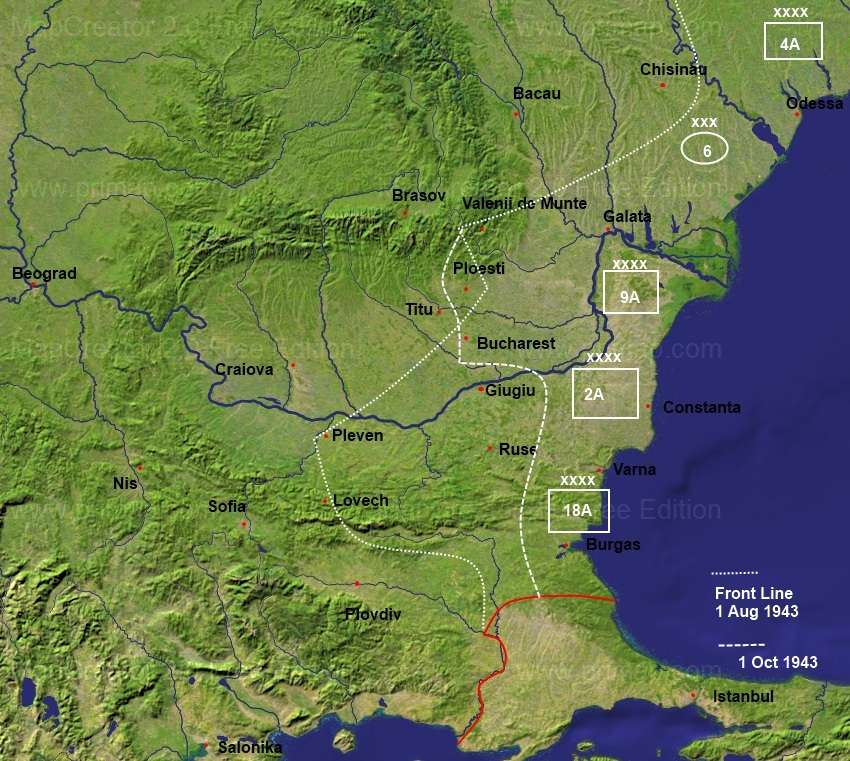
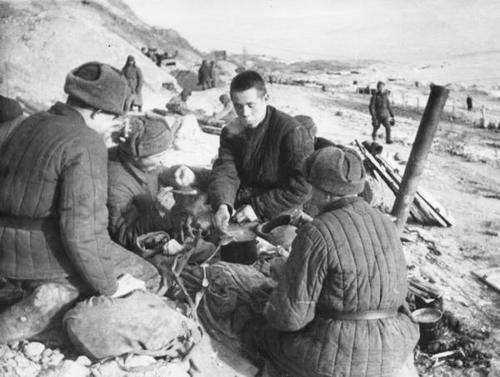
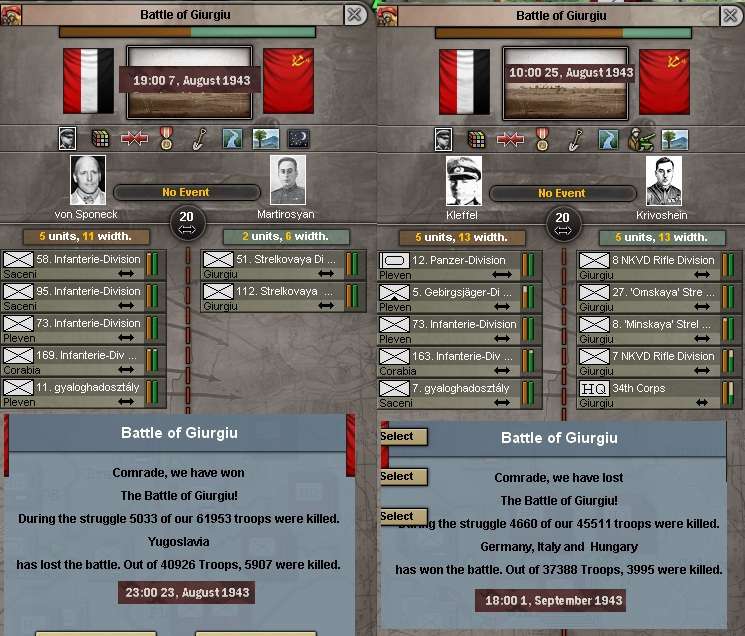
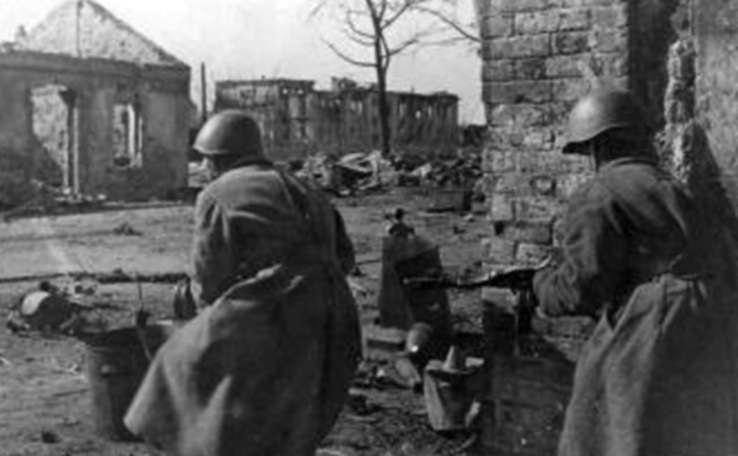
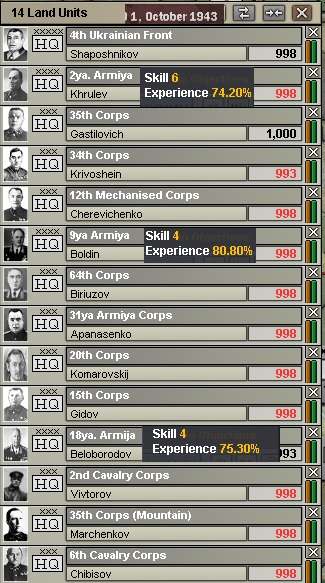
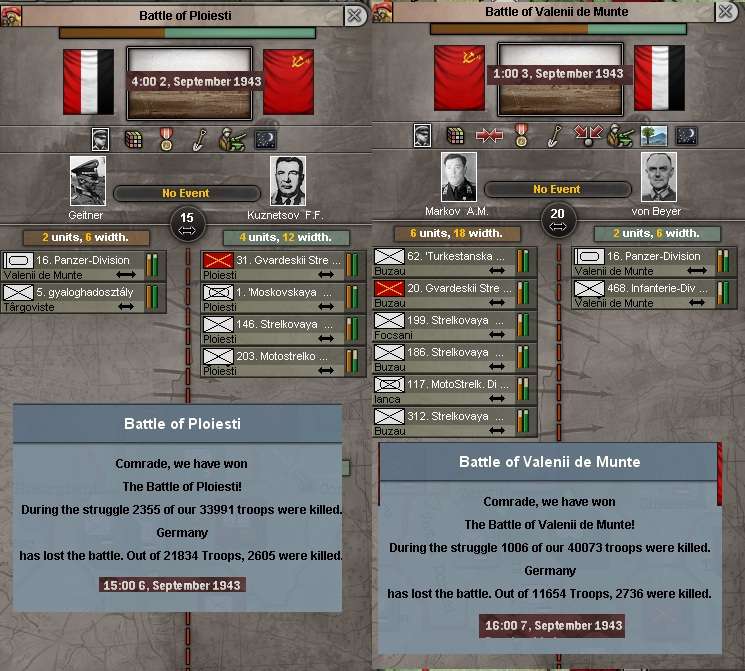
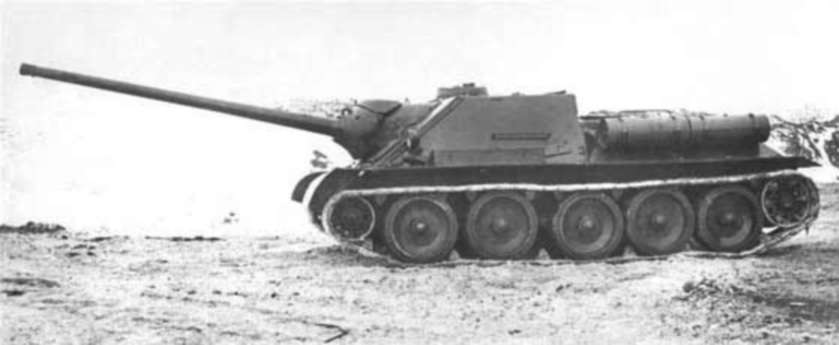
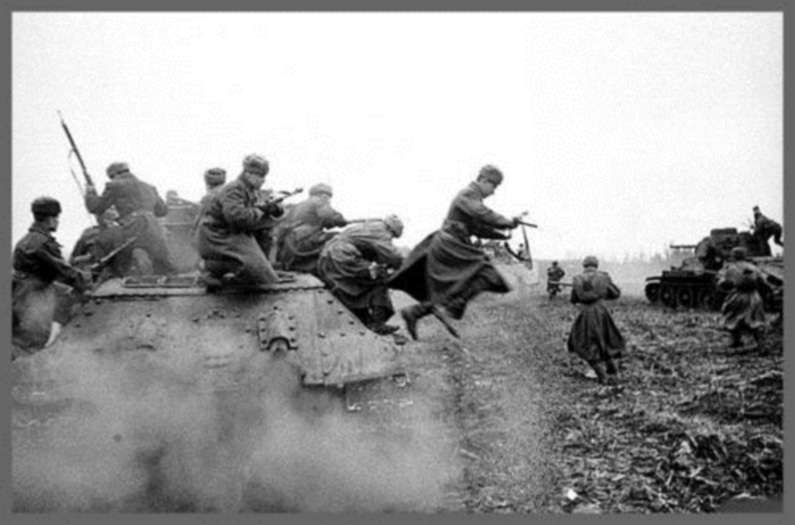

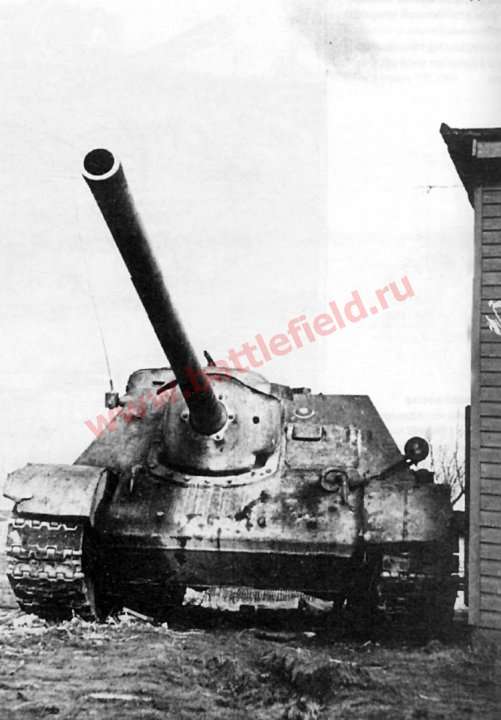
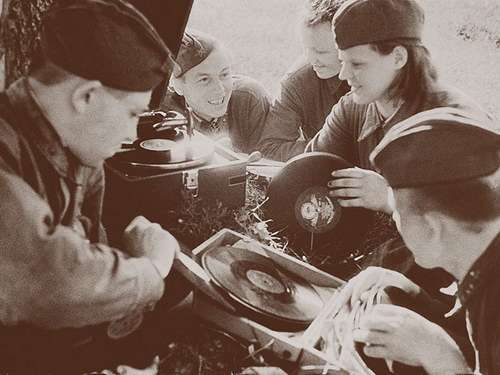

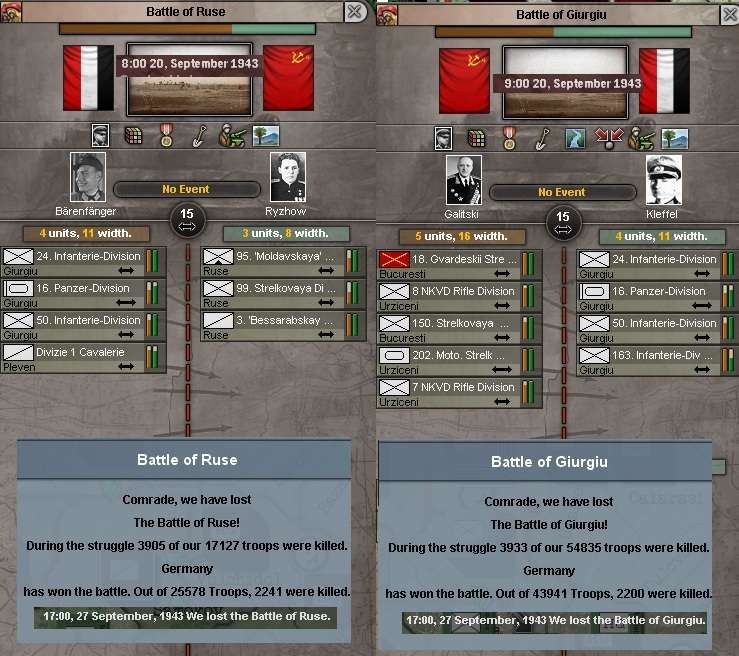
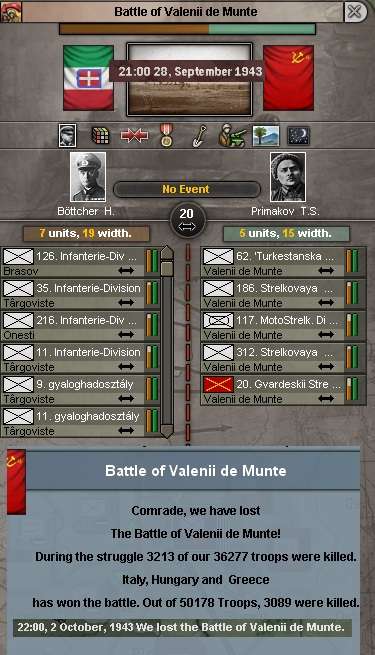
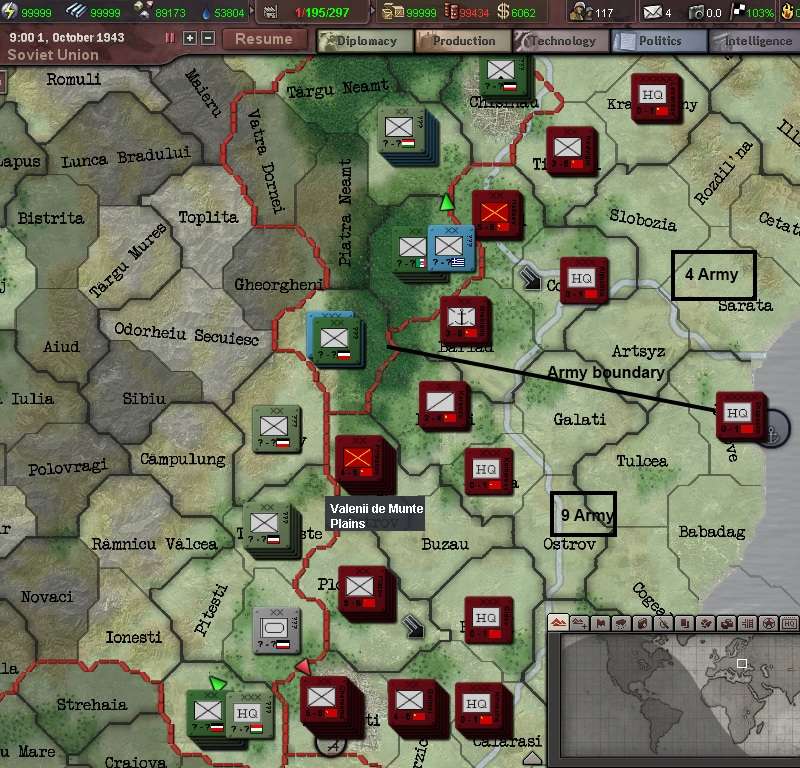

As in my semi-response above, just what these things were is really complex. Except in a handful of deliberately structured formations (the tank and mech corps), the Red Army was actually very diverse. Particular horrors to sort out are the various divisions thrown into the line in late 41 - some really were workers' militias, some just badly trained and equipped regular rifle divisions, but for example the NKVD formations used at the time (the combat ones) were a mix of very steely forces (who held Rostov in early summer 42 while the bulk of the Red Army slipped out of encirclement) and truely rubbish (in effect arming the local police).
(OOB after 2 Army was committed to the fighting in S Rumania)
(SU-100s moving to the front, well able to knock out a Tiger from a well prepared ambush and they became the backbone of 9 Army's defense all autumn in Rumania)
The result was a formation with real power [1], the only problem for 9 Army was they were shuttled from crisis to crisis, and at times needed to be pulled from the line to recover.
As in my semi-response above, just what these things were is really complex. Except in a handful of deliberately structured formations (the tank and mech corps), the Red Army was actually very diverse. Particular horrors to sort out are the various divisions thrown into the line in late 41 - some really were workers' militias, some just badly trained and equipped regular rifle divisions, but for example the NKVD formations used at the time (the combat ones) were a mix of very steely forces (who held Rostov in early summer 42 while the bulk of the Red Army slipped out of encirclement) and truely rubbish (in effect arming the local police).
I didn't mean to launch a big comment about the diversity of the Red Army... I just grew up reading Tom Clancy novels and the 'english translation' he's generally assigning to mot/mech forces is "## (Guards) Motor Rifle Division". I was just wondering if that was still correct as I'm setting up my own minimod for a group of my friends one of whom will be playing a 'Soviet' country and I wanted to give technically correct flavor names for divisions.
I didn't mean to launch a big comment about the diversity of the Red Army...
Epic fighting. If this were the only front in the Axis-Soviet war, I'd be worried about your fortunes, but as it is, the Germans are clearly fixating on an unimportant front to the detriment of the crucial ones.
Of course, we could laud the AI for roleplaying the Germans quite well. Tunesia in 1943, Kursk, the Ardennes, Himmler's offensive in northeastern France in late 1944, Spring Awakening in Hungary... All examples of the Germans throwing precious forces at lost causes.
Then again, what better use could the AI have found for those forces in the Balkans? Sure, it could have strenghtened its defenses in the Ukraine, but I feel that it would only have slowed down the inevitable - it's not like the Germans could have pushed you back.
To fully reinforce how much manpower would you need right now. The Germans are obviously not out of the fight yet.
I'm a little confused about the mechanized division. When you say captured German equipment, are you role-playing or does this mod have the Captured Armored Brigade from ICE? CoWW2 doesn't have it, but the earlier mod seems to be somewhat different.
Would STAVKA consider a strategic realignment of the Balkans front by redeploying the forces in Bulgaria into Romania, and thus shortning the lines - allowing the reinforcement of the more important Ukranian and Baltic fronts? I did not use the "R" word, so don't shoot!
Nooo !! They're pushing you back ;[
Looks like no Berlin for Christmas.
Also, organisations like the 'fortified districts' made up of machine gun companies and artillery battalions, that could occupy a large amount of front line without requiring much manpower. Then there were the Light Infantry Brigades used in the Petsamo offensive in 1944, with two ski battalions, two naval infantry battalions with Canadian-supplied landing craft, reindeer-drawn artillery, and a light tank battalion.
NKVD formations that were made up of former Border Guards tended to be at least as good as regular army units. Some form of 'banditry' wasn't that rare along long parts of the Soviet Union's borders in the Caucasus, Central Asia, and the Far East.
...
There's a book I've been reading, T-34 in Action, which is a collection of tales from Red Army tank commanders from World War Two. One of them describes the destruction of three Tigers by a pair of lend-lease Valentines, which were low and quiet and were able to sneak into a position where they got close-range flank shots. So it's not just SU-100s that can ambush Tigers.
Now they know what it's like for the German armoured forces.
I didn't mean to launch a big comment about the diversity of the Red Army... I just grew up reading Tom Clancy novels and the 'english translation' he's generally assigning to mot/mech forces is "## (Guards) Motor Rifle Division". I was just wondering if that was still correct as I'm setting up my own minimod for a group of my friends one of whom will be playing a 'Soviet' country and I wanted to give technically correct flavor names for divisions.
Ah, but we like our comments wide-ranging and rambling.Well, at least I do. It's amazing, the kinds of things I've learned from the side questions and answers on these forums
Long time luker here, when can we expect a Central Asian update? (Also first post!)
first AAR i am reading, was looking around for soviet tactics advice,...and I am hooked. have to say great way of storytelling!!!
i keeps reminding me of Discovery Channels Battlefield.
For the Soviets, remember that you can trade space for time - though most industry is to the west of the Urals, so you can be badly hurt. Also do lots of logistical strikes. Forget ground attack / interdiction. Starve the Axis armies of their supplies, and life will be a lot easier. From a 1936 start, you can easily stop the Germans before Smolensk, by setting up a properly balanced force structure, building industry in the east, and researching proper techs. You might also end up with no Great Patriotic War, as I did once, if you build up your forces too strong...
The other start dates are more challenging, as loki has demonstrated in both USSR AARs. 1938 seems to be a tougher challenge than 1939, due to the force balance.
